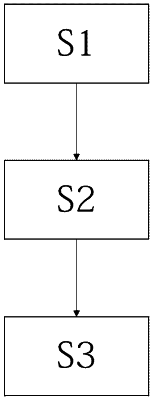| CPC C02F 1/705 (2013.01) [B09C 1/002 (2013.01); C02F 1/722 (2013.01); C02F 2101/345 (2013.01); C02F 2101/36 (2013.01); C02F 2103/06 (2013.01); C02F 2209/06 (2013.01); C02F 2209/29 (2013.01); C02F 2209/40 (2013.01)] | 17 Claims |

|
1. A method for remediating groundwater chlorophenols organic contamination, comprising the following steps of:
step S1. determining a location of a contamination source;
step S2. setting up an injection well in upstream in a flowing direction of the groundwater of the contamination source; and
step S3. degrading chlorophenols organic contamination in groundwater in the to-be-remediated region by injecting a remediation reagent into groundwater in a to-be-remediated region through the injection well;
wherein,
the step S3 comprises: detecting a flow rate of the groundwater in the to-be-remediated region,
when the flow rate is greater than 4 m/d, the remediation reagent comprises sulfidated nanoscale zero-valent iron and hydrogen peroxide, wherein an iron-sulfur ratio in the sulfidated nanoscale zero-valent iron is 15; and
when the flow rate is smaller than or equal to 4 m/d, the remediation reagent comprises sulfidated nanoscale zero-valent iron modified by sodium carboxymethylcellulose and hydrogen peroxide, wherein the sodium carboxymethylcellulose in the sulfidated nanoscale zero-valent iron modified by sodium carboxymethylcellulose is used at a concentration of 1.0 g·L−1.
|